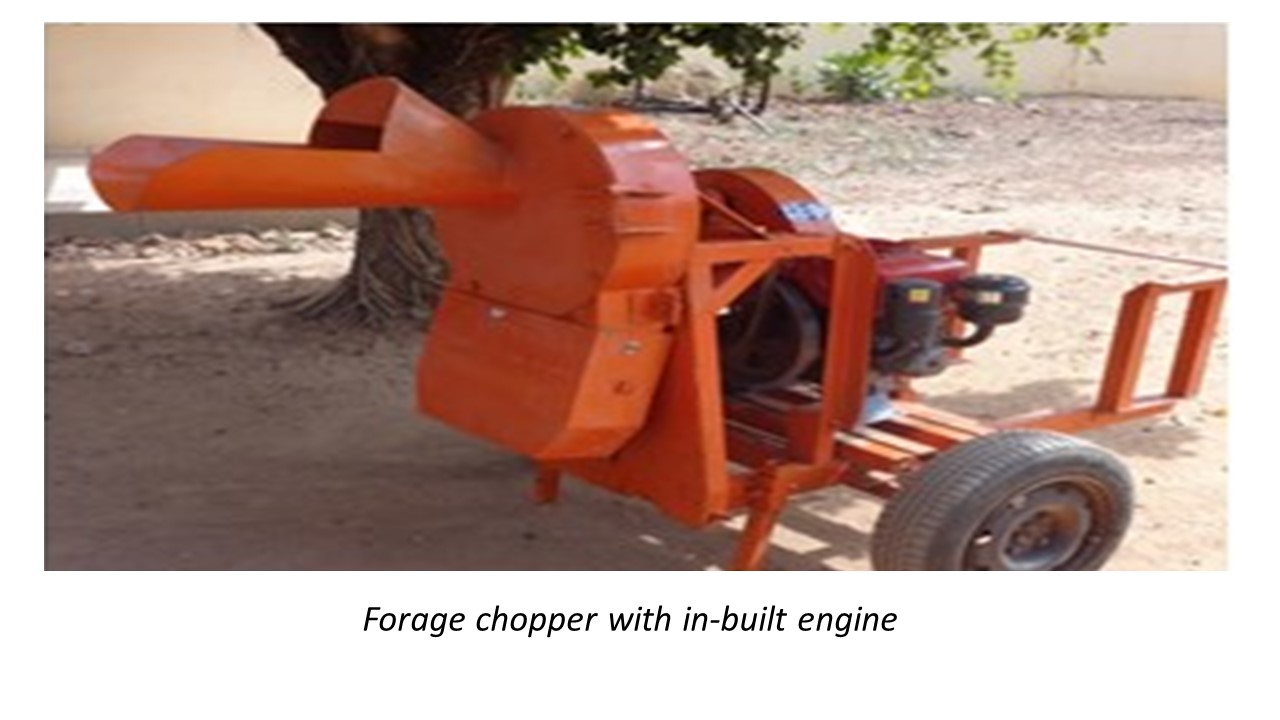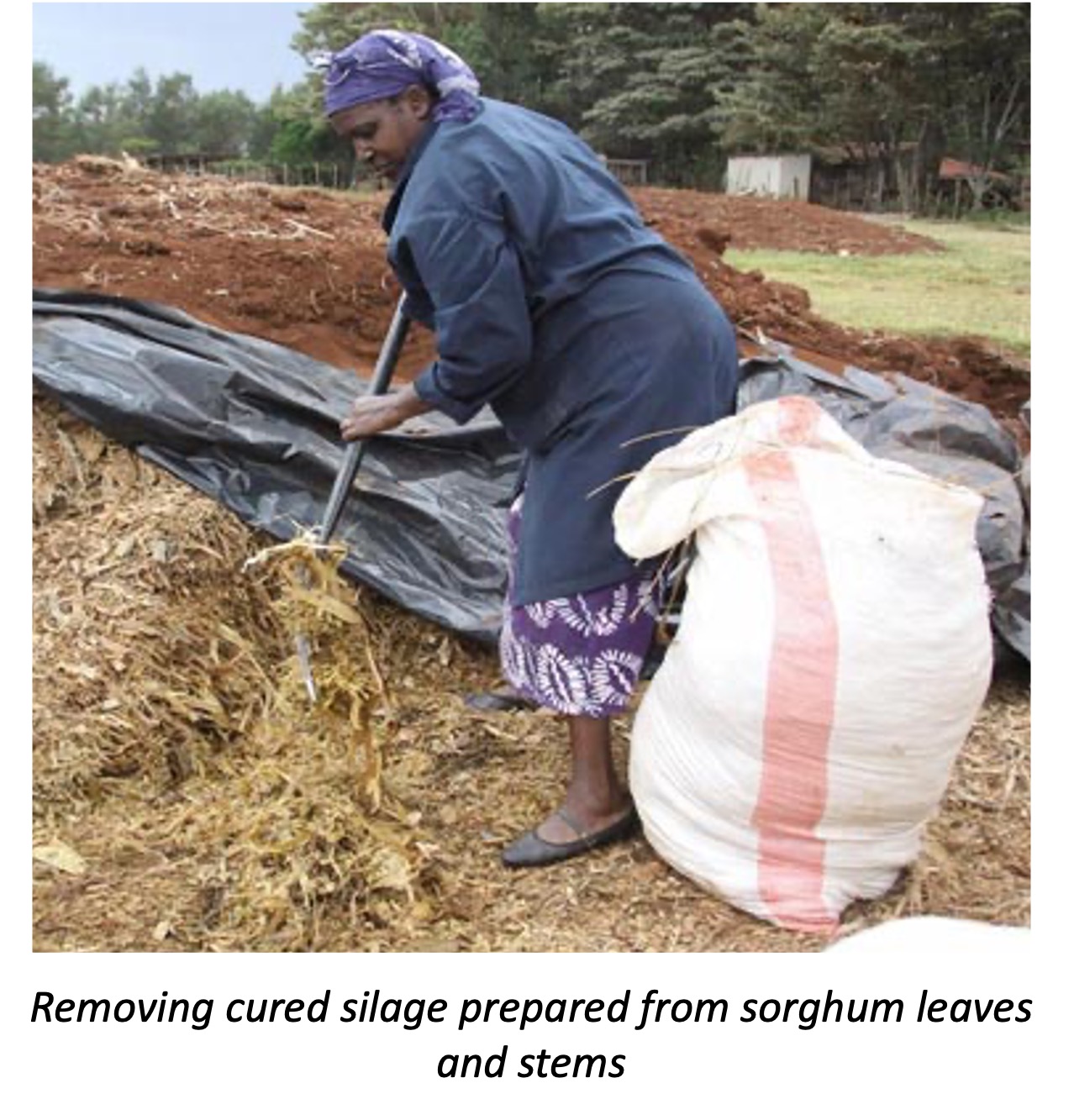Motorized Crop Residue Processing of Animal Feed
Summary
Crop residues and stover from millet and sorghum offer an important source of livestock feed. When animals are herded over croplands only 20%-30% of stover is grazed since they prefer the leaves that are sweeter and easier to digest. Farmers normally chop stems into small pieces by hand so it can be fed to cattle, but this task is time consuming. The manual process limits the amount of millet and sorghum stem residues that farmers utilize for livestock. What is not fed to animals is often burned in the field, a practice that contributes to soil carbon depletion, local air pollution and unnecessary CO2 emissions. To address the challenges of feed cost and seasonality, and to improve the management of agricultural resources, ICRISAT and its partners developed a mobile processor for millet and sorghum stover. It allows materials to be chopped or crushed for use as either feed or mulch. It is self-powered, easy to operate, low-cost and easily transported between fields. A large amount of crop residues can be processed with the machine by only just two people. By increasing resource use efficiency, the chopper facilitates better integration of crop and livestock enterprises.
About the Solution
Access to quality feed is the most important factor in successful livestock rearing. Many farmers feed whole stover from millet and sorghum to animals, which reduces their digestion and leads to sub-optimal animal diets. Motorized choppers and crushers make it possible to provide suitable feed while saving time and effort. The technology serves both animal and crop production since crop residues fed to livestock produce manure which in turn improves soil fertility when returned to the field. Farmers obtain particularly large gains by combining dual-purpose millet and sorghum varieties with this chopper technology. Mechanized crop residue processing benefits storage and preservation of feed products by making it possible to compact the material in bags that can tightly packed instead of piling whole stover into a shed. Packing enhances flavor and nutritive value as well. Increased availability of chopped and shredded crop residues from millet and sorghum in addition to legumes such as cowpea is fundamental to local production of well-balanced feed rations. Chopped and crushed stover of millet and sorghum is also suited to produce silage. Through mechanized crop residue processing, farmers can earn additional income, rear larger numbers of animals, increase milk and meat yield, and avoid feed shortages during dry seasons or prolonged drought.
Motorized crop residue processing is ideal for drylands in Sub-Saharan Africa where people heavily rely on mixed crop-livestock farming and where availability of feed biomass is limited owing to lower levels of annual rainfall and frequent drought. It is suitable for different materials available during the wet and dry seasons. The machinery can be used for either fresh and dry plant materials from a wide range of crops including sorghum, millet, maize, and cowpea. Chopping works best for green stover before fibers harden, while crushing is mostly done when crop residues have dried.
Machines have four main parts; a pair of horizontal rollers that moves stover forward, a hexagonal shear cutter with knives, a hammer for crushing the chopped stover, and a 7 to 13 horsepower engine running on petrol or diesel. The small, two-wheeled motorized cutter makes collection of stover from the field easy and fast. This equipment may be offered as a package to individual farmers, their associations, other service providers or feed producers.
Crop residue processing machines are easily transported between fields and farms using a donkey cart of motorbike. Most models are fitted with wheels. Depending on the model, throughput capacities range from 1 to 1.5 ton of stover per hour. Choppers and hammers work at the same rate as the roller to ensure uniform sized feed material. The top and bottom roller turn in opposite directions so the stover moves steadily through the machine. After chopping, materials fall into the crushing chamber where hammers mounted on a rotating shaft revolve at high speed. Material is further ground through the beating action of the hammers until it passes through holes in an adjustable screen. Crushed material is pushed forward by the motion inside the chamber. The size, number and positioning of hammers is very important for desired and efficient operation. Regular checks of engine oil and moving parts must be performed for ensuring that the machine does not clog or become damaged. Operators must be trained on maintenance and safety to keep running costs low, obtain the desired size of feed and avoid physical injuries.
Commercialization
Commercially available
Solution Images
Institutions




